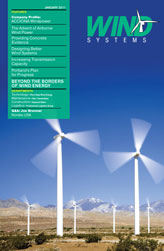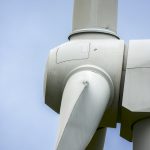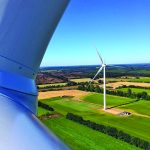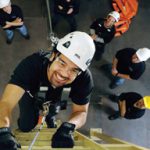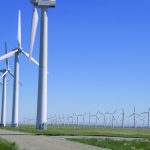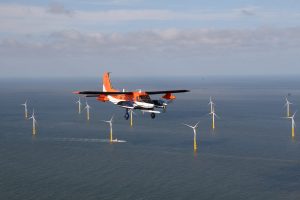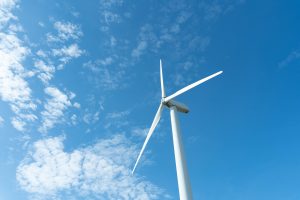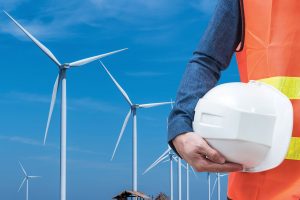One of the most common findings from a wind turbine inspection is broken cable ties, which results in abrasion to cable insulation, and perhaps ultimately cable failure. These inexpensive nylon fasteners are used in nearly all wind turbines to secure power and control cables into proper position, and provide the necessary “wire management” of the structure. While their rather simplistic design makes them a likely choice for assembling a turbine cable system, fatigue, exposure to UV or extreme temperatures, and chemical degradation have a negative effect on their useful life. One broken cable tie can produce a very undesirable rub point for a critical cable, leaving the turbine at risk of looming downtime that may take weeks to recover from.
Placement Important
In wind turbine design, there is limited space available for electrical components. Cables pass through foundations, cabinets and panels, up and down the tower, through the nacelle, from the generator, and into and out of the hub. Assembling cables through these transition points requires design considerations that understand how the cable might be affected by the operational and vibration forces of the turbine. As the dynamic response of a wind turbine structure to the imposed loads affects the rotor, the power train, and the tower, where cables are placed is just as important to how they are fastened to the structure.
Failure of wind turbine cables falls into at least five categories that include insulation damage, corkscrew deformation, jacket abrasion, jacket swelling from oils or chemicals, and shielding loss due to breaks from continuous bending. Protecting turbine cables is vital, and at each maintenance interval sufficient time must be given to replacing broken cable ties, untwisting bundles, retightening pinch blocks, and installing cable protection along sharp edges of transition points. Common errors can be avoided through education and attention to detail. Unintentional assembly techniques are a prime cause of later failures, assembling groups of cables and inadvertently exposing an adjacent cable to the sharp ratchet end of a cable tie, for example. Another oversight lies with the installation of fiber optic cable within the turbine. Industry does not recommend the use of cable ties for securing fiber optic cables due to the common tendency toward over-zealous cinching, possibly compromising performance or in severe cases causing fiber breakage due to the high level of pressure exerted on the fiber. If cable ties must be used instead of the Velcro fasteners provided by a few manufacturers for this application, care should be given to cross-tying the fiber cable to the attached bundle.
Many of us have also seen the result of a cable twist counter that didn’t quite do its job. While yaw counters are typically reset upon finding excessively twisted cables, repeated occurrences are likely due to improper drip loop length that was established during construction. Ultimately leading to premature failure due to the corkscrew effect, this issue is easily recognized by deformation of the cable in this area and can only be mitigated by a controls change or reinstallation of the cable itself. During each inspection, verifying proper drip loop length is another simple maintenance activity that can increase the longevity of a turbine’s life.
Avoiding Downtime
Though cable ties are one of the least expensive options for securing wind turbine cables together, replacing a cable can be one of the more expensive repairs to make if it fails due to insulation damage. Recognizing the areas where cable failure is likely and taking precautions to limit damage is essential in order to minimize unexpected production downtime. Understanding the cable installation requirements also increases the likelihood that your O&M team will continue to use sound maintenance techniques that will save time and money later.
















